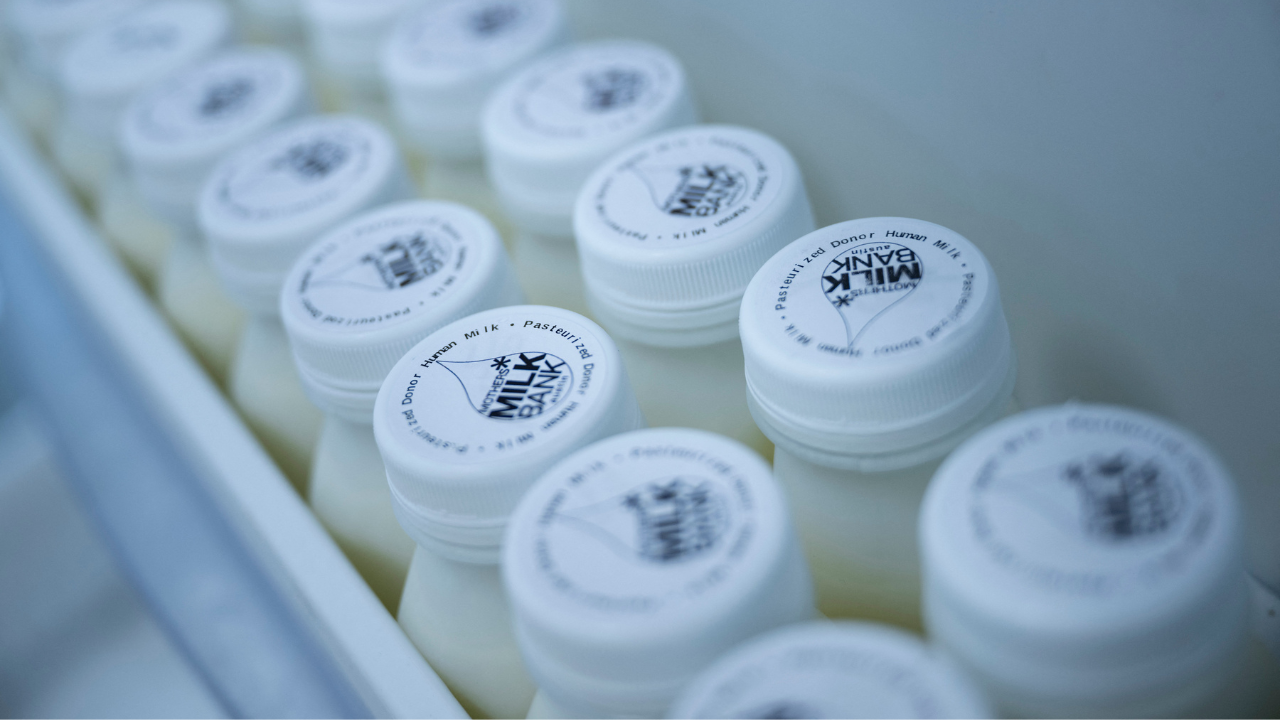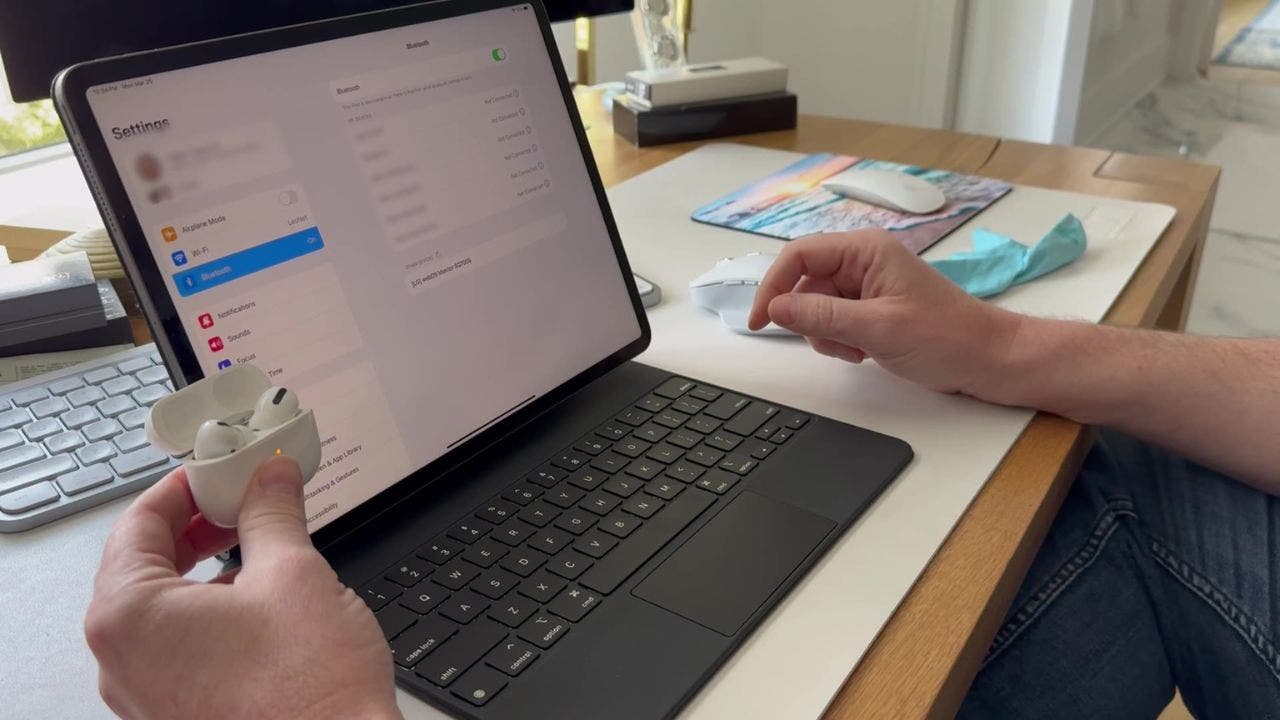Wyoming
EXCLUSIVE: Meta Coming To Cheyenne; Multibillion-Dollar Data Center Planned
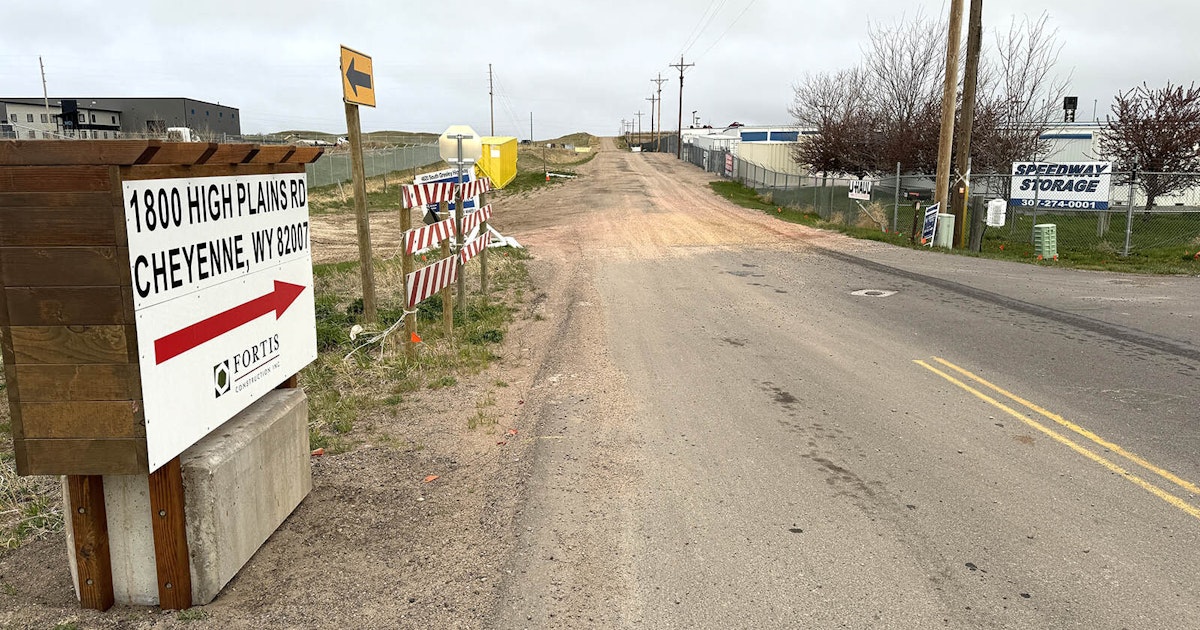
CHEYENNE — The secret is out.
Social media giant Meta Platforms Inc. — billionaire Mark Zuckerberg’s conglomerate that owns social networking sites Facebook, Instagram, What’sApp and other platforms — is building what could become the largest high-tech project in Wyoming in south Cheyenne.
When construction on its sprawling enterprise data center is completed in three years, it could become the largest multibillion-dollar investment ever in a single high-tech project in the Cowboy State.
Meta has targeted Wyoming because of the cool weather that’ll keep its super-heated enterprise system chilled a few degrees cooler than what is typical with water systems and proximity to a major high-speed internet trunk line that runs alongside a rail track in southern Wyoming from one side of the state to the other.
The social media company also has taken an eye to the business-friendly climate of the Cowboy State that gives sales tax exemptions for certain-sized data centers, according to several business and government officials interviewed by Cowboy State Daily.
These officials have signed nondisclosure agreements, or NDAs, to keep their mouths zipped about the huge enterprise data center coming to Cheyenne’s newest business park along South Greeley Highway, called the High Plains Business Park, which takes up roughly 1,300 acres overall.
Construction on the Meta complex recently began on the west side of the highway on 945 acres that the company bought last year near the permanently closed Intermountain Speedway, with work on a competing Microsoft data center happening on the east side.
Neighbors Not Fans
While those in the know are silent under the restrictions of their NDAs, the people who live in the Bison Crossing subdivision near the southern edge of the project are talking.
“It’s Meta,” said an elderly lady who was carting her trash out to the front of her house at 1436 Dayshia Lane about the huge project happening just beyond her property.
“There’s going to be a whole bunch of cars coming here from Colorado to work,” said the lady, who complained about the nonstop rumbling from heavy earth moving equipment coming from behind her house. “Today, it’s real bad.”
“It’s Meta,” said Bruce Riter, a tradesman in the construction industry who lives with his wife Rachel along Redhawk Drive in the Bison Crossing neighborhood.
Riter said that he was told about his new corporate neighbor by construction industry sources who bid on parts of the multibillion-dollar deal to build the first phase of the 800,000-square-foot Meta facility.
Other phases are expected to triple the size of the center in coming years.
“Oh, hell no, we don’t want it here. We bought our house 18 years ago and we could look out the back of our house into somebody else’s backyard, where cattle grazed,” said Rachel Riter of the grasslands that once grew behind her home as far as the eye could see.
“Nobody is happy about it,” she added.
“For 18 years we could look out at nothing from our hot tub, and now it’s going to be an industrial park,” Bruce Riter said, adding he’s not much of a fan of Meta’s social media platforms. “I don’t like what it does to kids or society. I’m not a Luddite, but …”
Biggest High-Tech Project
The construction project is viewed as one of the biggest high-tech investments ever in the Cowboy State, and is widely considered one of the reasons why the nation’s largest energy companies are building sprawling solar farms nearby along the highway leading south to Colorado along South Greeley Highway.
An enterprise data center is a data center that is owned and operated by a single organization to support its information technology needs. The facility contains physical infrastructure such as servers, racks and network systems that process internal data.
Meta, the backer of the project, began snooping around the area more than six years ago.
Economic development officials in the region refer to the project as “Project Cosmo,” which is run by a mysterious limited liability company formed with the state called Goat Systems Inc.
Goat Systems has hired Oregon-based Fortis Construction Inc. as the general contractor for the project, which recruited other workforce tradesmen to help.
Fortis is in the business of working on secretive projects, like the Meta one.
These projects can range from building a nanotechnology center in Oregon to make high-tech things for Japanese conglomerate Hitachi Ltd., to building a manufacturing facility for synthetic DNA products for California-based Twist Bioscience Corp.
Meta spokesman Ryan Moore was not immediately available to comment on the company’s plans to open an enterprise data center in Cheyenne.
New Signage
On Cheyenne’s southside, there’s a newly installed wooden sign off South Greeley Highway that points to 1800 High Plains Road, where Fortis began setting up a perimeter of fencing in some spots to keep snoopy people out of the area.
Until a few weeks ago, there was no High Plains Road. The old Speedway Drive turnoff from the highway has disappeared.
The plan is to eventually extend the new city-owned High Plains Road 5 miles to the west and hook it up with the High Plains Road exit off Interstate 25, where the Southeast Wyoming Welcome Center is located.
“That’ll take 10 years to eventually do,” said Betsey Hale, chief executive officer for the Cheyenne-Laramie County Corp. for Economic Development (LEADS), who is familiar with the project.
Fortis is said to employ roughly 800 workers on the project at the business park.
Just after the sun rose at 6 a.m. Thursday, a steady stream of white trucks with Fortis signage and Oregon license plates were seen driving back to the new business park where earthmovers and scrapers were digging up the land beyond the recently closed Intermountain Speedway.
During construction, Fortis plans to take over some of the speedway, which Coldwell Banker says is for sale at $2.1 million or for lease at 30 cents a square foot, to store some of its trucks, equipment and other material as a staging area for the massive project, according to economic development officials and a commercial broker knowledgeable about the racetrack property.
Meanwhile, Fortis and its small army of contractors have begun ripping up the grasslands to make way for Meta’s 945-acre first phase of construction.
High Plains Road that enters from the South Greeley Highway will initially bend south and connect with Parsley Drive off Terry Ranch Road, which connects with the I-25 exit to the east where fireworks stores are located near the Colorado border.

NDAs All Around
Everyone ranging from Cheyenne Mayor Patrick Collins and Laramie County Commissioner Gunnar Malm to Bailey Wheeler, a commercial broker with Coldwell Banker in Cheyenne, and Hale are keeping mum about the secretive project in south Cheyenne.
“I think it’s just one of those things that we can’t discuss until there’s public knowledge,” Wheeler told Cowboy State Daily.
LEADS owns and runs several business parks in the Cheyenne area, including the High Plains Business Park.
A press conference is planned for early July to announce the mystery and officially identify the enterprise data company, Collins told Cowboy State Daily.
Keeping secrets on business deals are not new for Cheyenne officials.
They’ve been to this rodeo before.
In recent years, Cheyenne area officials signed NDAs on projects involving Microsoft Corp. when it expanded to the Cheyenne Business Parkway area south of Interstate 80 near Campstool Road and the Burlington Trail; and with the North Range Business Park with 400 acres that Cheyenne recently annexed from Laramie County near the Dyno Nobel fertilizer plant on the city’s western edge, located just south of I-80.
LEADS and government officials dubbed the Cheyenne Business Parkway expansion as “the Bronco Philly Project,” which was a reference to Microsoft’s plans to build data centers in this eastern outskirt of Cheyenne.
Before the wraps were taken off, Microsoft’s plans to build more data centers in the North Range Business Park were called “Project Equality.”
Microsoft also has data centers in three other LEADS-run business parks encircling Cheyenne.
“This has been great for a community that hasn’t been historically reliant on the minerals industry like other counties in Wyoming,” Malm told Cowboy State Daily. “We’ve carved out a niche community in the tech sector.”
Collins said that because the smaller 400-acre parcel adjacent to the North Range Business Park was annexed by the city, the next step is to annex the adjoining North Range Business Park. The move is seen as a benefit to business park tenants because of a huge discount they’ll receive on water and sewer rates, he said.

Going For The Gold
Annexation new industries into the city isn’t new for Cheyenne. Last year, the city brought the High Plains Business Park into its fold, a sure tax revenue benefit for the city as well.
But that could become the farthest edge of the city to the south.
“I don’t see the city really going beyond Chalk Bluff Road. I’d be surprised if we’d even go beyond south of Terry Branch Road,” said Collins, who cited the high expense of delivering sewer and water through the rolling hills and tough terrain beyond the High Plains area.
With the massive data centers now rooted in the region, Cheyenne sees a need for more power production to be dispatched over its electrical grid.
The energy-guzzling centers in the region are expected to triple the electricity consumption to more than 1,000 megawatts annually in the next five years, said Collins, citing utility forecasts.
“The fastest growth is happening in Cheyenne,” he said.
Customers For Wind, Solar
Another underlying trend factoring into luring data centers to the region are clean energy supplies for the data centers, considered a marketing selling point for the huge corporations that own them.
Canada’s Enbridge Inc. is in the beginning stages of getting permits to build a $1.2 billion solar project capable of generating up to 800 megawatts of electricity and considered the largest in Wyoming.
That project will blanket the hilly grasslands to the east of South Greeley Highway with 1.2 million solar panels. Enbridge has stated that it wants to sell some of the electricity to super-sized data centers in the area, but won’t name any until it has a contract in hand.
The deal to sell the power is likely with Black Hills Energy, the Wyoming provider of electricity and natural gas for South Dakota-based Black Hills Corp., which has a power substation in the area, and which in turn would sell the power to data centers located along the South Greeley Highway corridor.
Another power provider is located on the western side of South Greeley Highway near the intersection of Chalk Bluff Road, where a 150 MW solar farm was recently built.
In September, that operation was bought by Atlanta-based Southern Co. from QCells USA Corp. The acquisition is the 30th solar project for Southern, but its first in Wyoming.
The project is scheduled to begin supplying electricity to Black Hills soon.
Hale said that the region is exploding with growth and the power requirements are substantial. Taken together, seven data centers have located in LEADS-owned business parks and provided $20 million in sales taxes paid on power, and more than $2.4 billion in capital investment since they were opened several years ago.
“We’re seeing a lot of energy companies contacting us, ranging from micronuclear reactors to hydrogen and natural gas plants,” she said. “There’s lots of stuff going on. I’ve been around 40 years. None of these parks have been built overnight.”
Pat Maio can be reached at pat@cowboystatedaily.com.

Wyoming
Pokes Football: Best of Wyoming – No. 20

LARAMIE — It’s officially “series season.”
This summer, with the help of some longtime Wyoming football followers, we will count down the Top 25 homegrown products in program history.
As always, what these guys did in professional football doesn’t matter. This is all about production in Laramie. A couple of the guys on this final list may not have been born here, but they grew up in Wyoming and graduated from an in-state high school.
Once we put a bow on these selections, we’ll move on to other states like Colorado, Nebraska, Texas, etc. You get the picture:
Wyoming offensive lineman Frank Crum hugs head coach Craig Bohl before the Cowboys take on Hawaii on Senior Day./ DJ Johnson photo
No. 20 – Frank Crum
Offensive lineman, 2018-23, Laramie, Wyo.
Résumé in Laramie
Frank Crum appeared in 56 career games at Wyoming after redshirting his true freshman season in 2018. The former walk-on earned First Team All-Mountain West honors during his final season in Laramie after making the switch from right to left tackle in the offseason. The 6-foot-7, 315-pound Laramie native was a third-generation Cowboy, joining his grandfather Earl and father Gary. Crum turned down offers from rivals Utah State and Colorado State before accepting a PWO from then head coach Craig Bohl. Crum, who was also an all-conference honorable mention in 2021, helped pave the way for 1,000-yard rushers Xazavian Valladay and Titus Swen. He was part of four bowl teams during his six years on campus, winning a pair of Arizona Bowls and the Famous Idaho Potato Bowl in 2021. Crum finished with a 5-1 record against Border War rival CSU. The lone loss came during the Covid-19-shortened 2020 campaign. Last month Crum signed with the Denver Broncos as an undrafted free agent.
About Laramie
Home of the University of Wyoming, Laramie is home to more than 31,000 residents, making it the fourth-largest city in the state. The Gem City is nestled between the Snowy and Laramie Range and its elevation exceeds 7,200 feet above sea level. Laramie is roughly 50 miles west of Cheyenne on Interstate-80 and 25 miles north of the Colorado state line.
Pokes Football: Best of Wyoming series
* No. 25
* No. 24
* No. 23
* No. 22
* No. 21
(Cody Tucker and Jared Newland both work for Townsquare Media, which owns 7220sports.com. Kevin McKinney has been a color commentator of Cowboy football for five decades. Ryan Thorburn now works for the University of Wyoming in a sports information role after spending decades in the newspaper industry, most recently at the Casper Star-Tribune. Sally Ann Shurmur, the daughter of former UW football coach Fritz Shurmur, is also a veteran of the newspaper industry, working as a journalist, columnist at the CST for 43 years. She currently writes for Cowboy State Daily.)
University of Wyoming’s Top 50 Football Players
The rules are simple: What was the player’s impact while in Laramie? That means NFL stats, draft status or any other accolade earned outside of UW is irrelevant when it comes to this list.
This isn’t a one-man job. This task called for a panel of experts. Joining 7220’s Cody Tucker are Robert Gagliardi, Jared Newland, Ryan Thorburn, and Kevin McKinney.
We all compiled our own list of 50 and let computer averages do the work. Think BCS — only we hope this catalog is fairer.
Gallery Credit: 7220Sports.com
– University of Wyoming’s Top 50 Football Players
Wyoming
Many Washington State Locals Not Thrilled With Grizzly Reintroduction

If Wyoming grizzlies are selected to repopulate Washington State’s remote North Cascades region, they might not receive a warm welcome from locals.
“They are a major, major apex predator, they are at the top of the food chain,” Omak, Washington, resident Chance Cornell told Cowboy State Daily on Friday during a brief break from his job at a local hotel and casino.
He and his wife are avid hunters and outdoor enthusiasts, but Cornell said he’s not sure how he feels about possibly running into grizzlies in the backcountry.
“Now you’re talking about a grizzly bear. I think it’s going to come with some challenges. I don’t know what they’re going to do. I don’t know,” he said.
Northeast Oregon resident Bud Ludwigson told Cowboy State Daily that Washington’s North Cascades region has long been one of his favorite hiking and backpacking destinations.
But with grizzlies moving in, he’s not sure if he’ll keep going back.
“I guess as a hiker, a backpacker and somebody who ventures into the mountains, (the presence of grizzlies) is something that scares me when I’m in Yellowstone country, Montana or Canada,” he said. “When I’m here in Oregon or in Washington, all I’ve had to worry about are black bears. But grizzlies are on a whole other level.”
Bears Will Be Flown In
The U.S. Fish and Wildlife Service and other federal agencies recently green-lighted plans to reintroduce grizzlies to the North Cascades. Wyoming was named as a possible source for bears to transplant. But there’s been no final word yet on where the first batch of reintroduced grizzlies will come from.
When the reintroductions begin, possibly as soon as this summer, bears will be trucked into staging areas. The sedated grizzlies will then be placed in nets or on platforms slung under helicopters and flown to release sites in the backcountry.
Typical Concerns
Wyoming resident Rob Wallace is former U.S. assistant secretary of the Interior. He recently told Cowboy State Daily that in 2019, he went to Omak to represent the Interior Department during local public hearings regarding the grizzly reintroductions.
At the time, local resistance to the idea was strong, he said. Locals cited many of the same concerns that folks in Wyoming, Montana, Idaho and Colorado have about large predators such as grizzlies and wolves.
They expressed worry over grizzlies attacking cattle and possibly disrupting other existing land uses, Wallace said.
Will It Affect Tourism?
Cornell said the effects on tourism are also a concern.
“We do rely on tourism as part of the economy. There isn’t a whole lot of industry here,” he said.
“There’s hiking trails, there’s biking trails,” and people also enjoy boating and fishing, he said.
With that many people out and about, the presence of grizzlies could put a new twist on things, Cornell said.
“They’re saying, ‘Oh, this is going to work.’ But what happens when it doesn’t work?” he said.
As to whether the reintroduction of grizzly bears could hurt local tourism, “I think it might,” Cornell said. “I think it might slow down. Or, maybe I’m 100% wrong and maybe we won’t see any change in tourism at all.”
Ludwigson said he’s also worried about what could happen when grizzlies return to an area where, unlike Wyoming, people aren’t used to them.
“There are just a lot of unprepared people in those mountains,” he said.
Mixed Feelings
Cornell said he and his wife like getting outside as much as they can and hunt mule deer, whitetail deer, turkey and waterfowl.
“We are generally armed when we go to the outdoors,” he said.
However, the area where the bears will be introduced is “a national park,” where firearms aren’t allowed, he added.
“I don’t think (the grizzly reintroductions) will deter anything I’m doing. I’ve never seen a grizzly in real life out in the wild. We’ve seen some black bears. There’s something way different between a black bear and a grizzly,” Cornell said. “But where they’re going to be putting them, heck, maybe we’ll never see them.”
Ludwigson said he’s tried to consider both sides of the debate over grizzly reintroduction, but ultimately leans against the idea.
“Just as a recreationalist, I don’t support it, and I don’t want to go up there and deal with that additional threat of a much larger mammal,” he said.
Mark Heinz can be reached at mark@cowboystatedaily.com.
Wyoming
That Day In 1898 When Laramie Inventor Elmer Lovejoy Drove Wyoming’s First Car

Elmer Floyd Lovejoy took a little drive in downtown Laramie on May 7. He waved to a few acquaintances as he puttered down Second Street at an unthinkable 8 miles per hour.
“Strange, isn’t that the bicycle repair guy?” thought a bystander or two.
“I think so. And where is he off to in such a hurry?”
The 26-year-old was well known in town. He and the adorable Nellie Oakley were married three years prior. Nellie was pregnant with the couple’s first child, a son. They would name him Orell.
Lovejoy’s joyride was a noteworthy one. No one Laramie, or Wyoming for that matter, had yet seen an automobile. It was 1898. Folks had read about horseless carriages, likely scoffed at the notion and gave it little further thought.
After all, the Spanish-American War was on. That dominated headlines. Plus, horses outnumbered people in Wyoming. Saddlemakers weren’t exactly sweating Lovejoy’s toy.
A First Of Sorts
Lovejoy’s test outing of his motorized carriage in 1898 was historically significant for the state. The event itself was the first known appearance of an automobile in Wyoming, and some say among the first west of the Mississippi.
It was Lovejoy’s passion for biking combined with his obsessive tinkering that eventually led the burgeoning inventor to come up with plans for his horseless buggy in 1985. Three years later he was making his historic test drive in Laramie.
Lovejoy’s “car” was not the first. Inventors in France, Germany and the United States had already filed patents decades earlier. A steam-powered auto had existed a century prior to that. What Lovejoy did, though, is invent a version of the steering wheel still in use today. But he technically wasn’t the first to do that either.
Lovejoy also was one of the early mechanic-minded inventors to recognize automobiles would need pneumatic tires, not just solid rubber. With all that accomplished, Lovejoy eventually set his sights on designing an automatic garage door opener, and he may have had an instrumental role in America’s first road map.
Growing Up With Elmer
Lovejoy was born in Illinois on Feb. 2, 1872. His family moved to Laramie in 1883 in search of a drier climate for Elmer, who was diagnosed with consumption (tuberculosis). Lovejoy graduated from Laramie High School and went off to college at University of Wyoming.
Books weren’t for him, though, and Lovejoy dropped out after three short months to become an apprentice at the Cook & Callahan planing mill. He picked up things fast. In no time, Lovejoy was assigned to major construction projects like the Edward and Jane Ivinson mansion (now the Laramie Plains Museum) and St. Matthew’s Episcopal Cathedral.
When the mill went bankrupt, Lovejoy caught on with a ranching outfit in North Park, Colorado, for $30 a month. Once the foreman found out how good the tinkerer was at fixing things, he never rode a horse again.
But he did ride a bicycle — all the way to Chicago. With his ranch earnings, Lovejoy bought his first bike and set out for Chicago with his heart set on seeing the World’s Fair in 1893. He averaged 80 miles a day. It took him two weeks.
Turns out he didn’t need to hurry. The fair’s opening was delayed by weather and other issues until May of the following year. But on the way, the 20-year-old cyclist managed to meet his future wife — a 15-year-old Woodbine, Iowa, saddlemaker’s daughter named Nellie Oakley.
Once back in Laramie, Lovejoy took a job as a mail carrier. He also repaired bicycles on the side. After a year toting letters, Lovejoy opened his own shop, Lovejoy Novelty Works, on the second story of the post office at 315 S. Second St. The shop would move several times, eventually settling at its best-known location — 412-414 S. Second St. in a building that still stands.
Lovejoy continued a correspondence and courtship with Nellie. The two were married Aug. 27, 1895. Within four years, the entire Oakley family relocated to Laramie with some eventually coming to work for Elmer.
Fix-It Guy Builds A Car
Elmer’s reputation for being able to fix just about anything began spreading throughout Laramie and beyond. When he wasn’t repairing a flat tire on a bicycle or getting someone’s Edison phonograph back in working order, Lovejoy was working on designs for an automobile.
Lovejoy borrowed heavily from what he knew — bicycles. Just like fellow Illinois bicycle mechanics J. Frank and Charles Duryea, who would go on to design and build the first American gas-combustion automobile in 1893, it was creative bicycle-makers in the U.S. that spearheaded efforts toward turning two-wheeled pedal bikes into four-wheeled autos.
He may not have been able to behold the world’s wonders at the Chicago Fair, but if that 2,000-mile roundtrip bike adventure taught Lovejoy anything, he was driven to invent a locomotive source that did not include equine nor human power.
The winter of 1897-98, Lovejoy worked tirelessly on his invention. He told the Laramie Boomerang he expected to have his “horseless carriage ready for operation by May 1.” He was just waiting on delivery of the one-cylinder, two-cycle marine engine.
Lovejoy’s car was driven by two chains connected to both rear wheels. The conveyance ran on 1 ¾-inch solid rubber tires mounted on the iron wheels. It had a T-bar tiller as the steering mechanism. The 940-pound carriage had two seats, able to comfortably carry four passengers.
Lovejoy test drove the model Saturday night and Sunday, May 7 and 8, 1898, to an audience of oohing and aahing townspeople.
“There were two speeds in use on the machine yesterday, one of five and one of ten miles per hour. When the machine was on good hard places it acquired a speed of ten or twelve miles per hour,” the Boomerang recapped.
Lovejoy said he could have hit 15 if he didn’t second-guess his original idea of running balloon tires. He mistakenly thought a pneumatic tire would not be practical for the heavier machine considering the pounding it would be subjected to by road conditions. None of Laramie’s streets were paved.
Lovejoy had Morgan and Wright Bicycle Tire Co. of Chicago build him extra heavy duty 4-inch-wide air-filled tires for which there “wasn’t a spare in the world,” Lovejoy told the Boomerang at the time.
The wider pneumatic tires would better absorb bumps and keep the rig from digging itself into ruts. It would not be until he 1920s that air-filled tires became the standard on commercial automobiles. Once again, Lovejoy was ahead of his time.
Steering Wheel Invention
Another lesson Lovejoy quickly learned was steering his contraption had to get better. The T-bar tiller was cumbersome and tiring. It was problematic to get the two front wheels to pivot in unison on the same axle under the weight of the vehicle body out over them.
Automakers in France, where the car was born, were having the same problem. Then, almost all at once, three different designers hit upon the idea of a steering wheel.
Alfred Vacheron modified a Panhard and Lavassor model for a Paris-Rouen race in 1894 using a steering wheel instead of a tiller. Arthur Krebs improved the design in 1898 to make it tilt at an angle facing the driver.
In Britain, Charles Stewart Rolls bought a Panhard from France and implemented his own steering steering wheel idea into his designs.
Meanwhile, in the U.S., Ohio bicycle manufacturer Alexander Winton is credited with creating the first mass-market steering wheel-equipped car in 1898.
In the late 1880s, Michigan bicycle manufacturer Sterling Elliott was also perfecting his steering knuckle mechanism that made use of tie-rods — essentially the same assembly still used in today’s cars. He was paid royalties by numerous U.S. car manufacturers until his patent expired in 1907.
Lovejoy went back to the drawing room to invent a better steering mechanism. He came up with his own steering knuckle design in 1905. His father refused to fund his effort to apply for a patent, so he sold the rights to Locomobile Company for $800 and one of their Locomobile Steamer automobiles. He received Locomobile #55, the 55th car commercially manufactured in the United States.
Meanwhile, the automotive industry moved on at a blistering pace.
Inventor-Turned-Businessman
By 1902, the first gasoline-powered car was brought to Laramie that January. It was an Oldsmobile bought by Dr. H. L. Stevens. Lovejoy assembled it for him when it came off the train, undoubtedly enjoying the chance to reverse engineer such a machine.
Around that time, local rancher W. B. Emmons also brought a gasoline car to Wyoming — Laramie’s first Franklin. Lovejoy was so enamored with the air-cooled engine able to run at high-altitude that he signed on to be one of Franklin Motor Car Co.’s first authorized dealers in 1904.
Early on in the relationship, Franklin sent a sales manager from its home office in Syracuse, New York, to Wyoming to see why Lovejoy’s sales numbers were not very encouraging. Maybe he just needed a few marketing tips.
The Franklin man arrived by train and was soon touring about the countryside with Lovejoy pointing out his territory. After traveling several miles outside of town, Lovejoy pointed out a ranch whose owner had bought a Franklin. Hours later, they passed a second ranch, and by the end of the day they had seen only half a dozen places where there was any sign of life.
Laramie population at the time was about 8,207, and Albany County was only 13,084.
After that the Franklin rep apologized, stating he didn’t know how Lovejoy managed to sell the number of cars he did.
Lovejoy also sold Studebakers for a while and opened Laramie’s first car rental business in 1907.
The Laramie Republican in 1905 proclaimed, “Among the most prominent and indispensable businessmen of the city is Elmer Lovejoy … who has a reputation all around Laramie for ‘mending any old thing.’”
The Republican went on to call Lovejoy a “genius with tools,” noting his commitment to public service as well. Lovejoy was a Laramie City Council member, active with the fire department and a member of various town committees. He also belonged to the Benevolent Protective Order of Elks and was a member of the Laramie Chamber of Commerce.
Lovejoy Maps His Future
But the Laramie businessman wasn’t done yet.
Gov. Bryant Brooks took note of Lovejoy’s popularity and chose him to attend the Good Roads Convention in Buffalo, New York, as efforts were underway to plan and plot the Lincoln Highway. The transcontinental road connecting the Atlantic and Pacific oceans crossed 13 states.
Lovejoy was the perfect person to help guide it through his city and the surrounding Laramie Valley, at one point stretching east in the Sherman Mountains at the highway’s highest point at 8,835 feet elevation.
After all, it was Lovejoy who helped found the Laramie Bicycle Club in 1902. He was one of cycling’s biggest proponents. He even built a bicycle for two for he and his wife to ride.
In addition, Lovejoy’s shop was the undisputed center for all mechanical and transportation needs. He also became a Crescent brand bicycle dealer when the Swedish maker with roots in Chicago began U.S. sales in 1908.
When the highway opened in 1912, Lovejoy assisted the National Highways Association with making one of America’s first road maps, pointing out places of interest in Wyoming and the Laramie area.
Lovejoy’s final contribution to the world came in 1917 when he invented an automatic garage door opener. He filed U.S. patents in 1918 and 1921. For some time, he was the sole manufacturer and distributer for the doors anywhere in the country.
Just before retiring and moving to Santa Ana, California, an 80-year-old Lovejoy sat down with Laramie Boomerang reporter Vandi Moore for an interview in December 1952.
Lovejoy told Moore he had never gotten in an automobile accident in his life, which included more time behind the wheel than any of his contemporaries, an estimated 1 million miles.
“I believe I’ve driven longer than any other driver in the world,” said Lovejoy, who was then driving a Chevrolet.
Lovejoy admitted his retirement in California would probably include a little tinkering, but his time in the automotive industry was long over. He said he had convinced himself he could make a car and satisfied the curiosity of many others. He was content with that.
Lovejoy died in California in 1960. His legacy lives on in a popular downtown Laramie hangout, Elmer Lovejoy’s Bar and Grill, named in his honor. It’s a one-minute bike ride from his old shop.
Jake Nichols can be reached at jake@cowboystatedaily.com.
-

 News1 week ago
News1 week agoSkeletal remains found almost 40 years ago identified as woman who disappeared in 1968
-

 World1 week ago
World1 week agoIndia Lok Sabha election 2024 Phase 4: Who votes and what’s at stake?
-

 Politics1 week ago
Politics1 week agoTales from the trail: The blue states Trump eyes to turn red in November
-

 World1 week ago
World1 week agoBorrell: Spain, Ireland and others could recognise Palestine on 21 May
-

 Movie Reviews1 week ago
Movie Reviews1 week ago“Kingdom of the Planet of the Apes”: Disney's New Kingdom is Far From Magical (Movie Review)
-

 World1 week ago
World1 week agoUkraine’s military chief admits ‘difficult situation’ in Kharkiv region
-

 World1 week ago
World1 week agoCatalans vote in crucial regional election for the separatist movement
-

 Politics1 week ago
Politics1 week agoNorth Dakota gov, former presidential candidate Doug Burgum front and center at Trump New Jersey rally
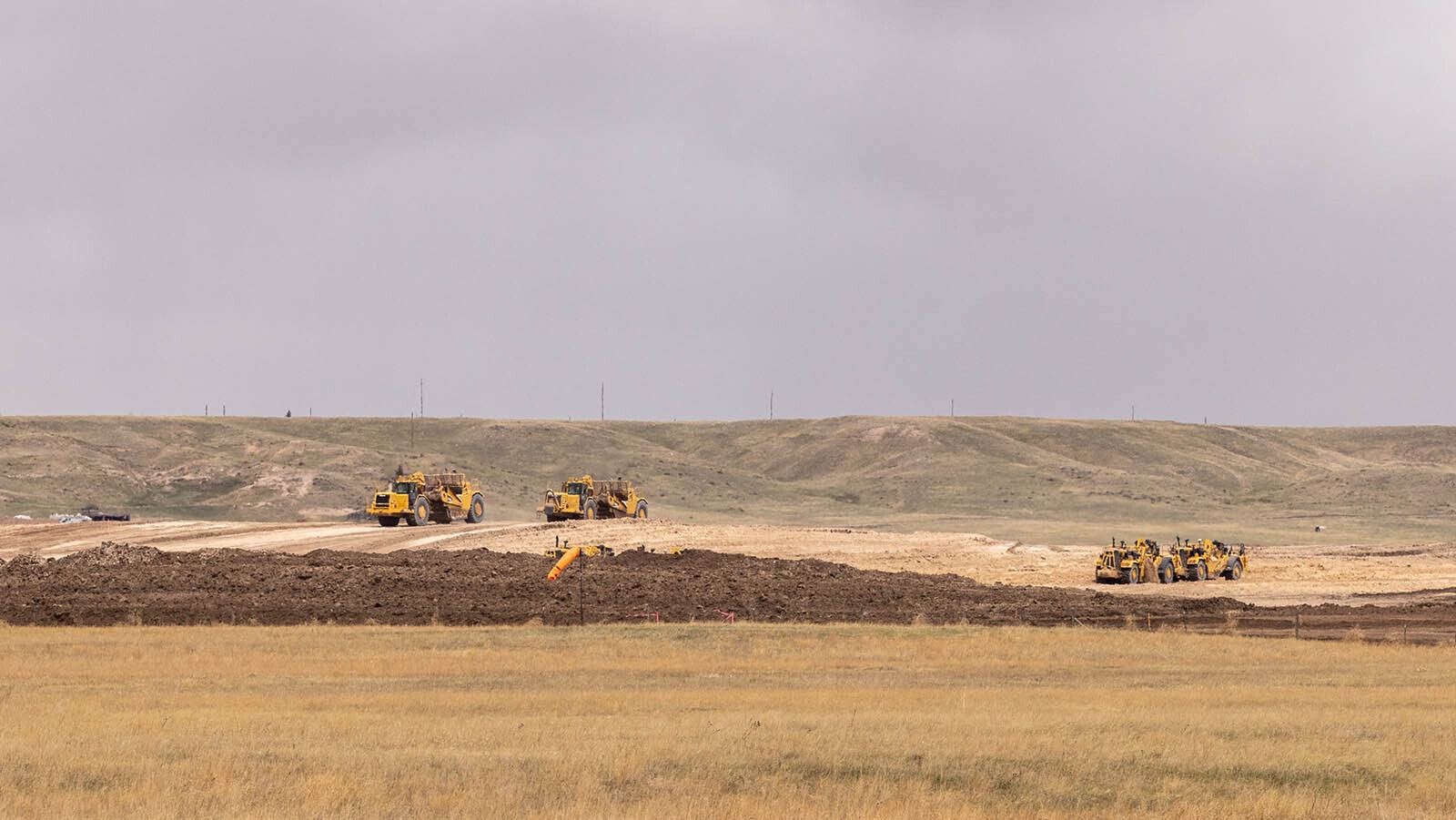
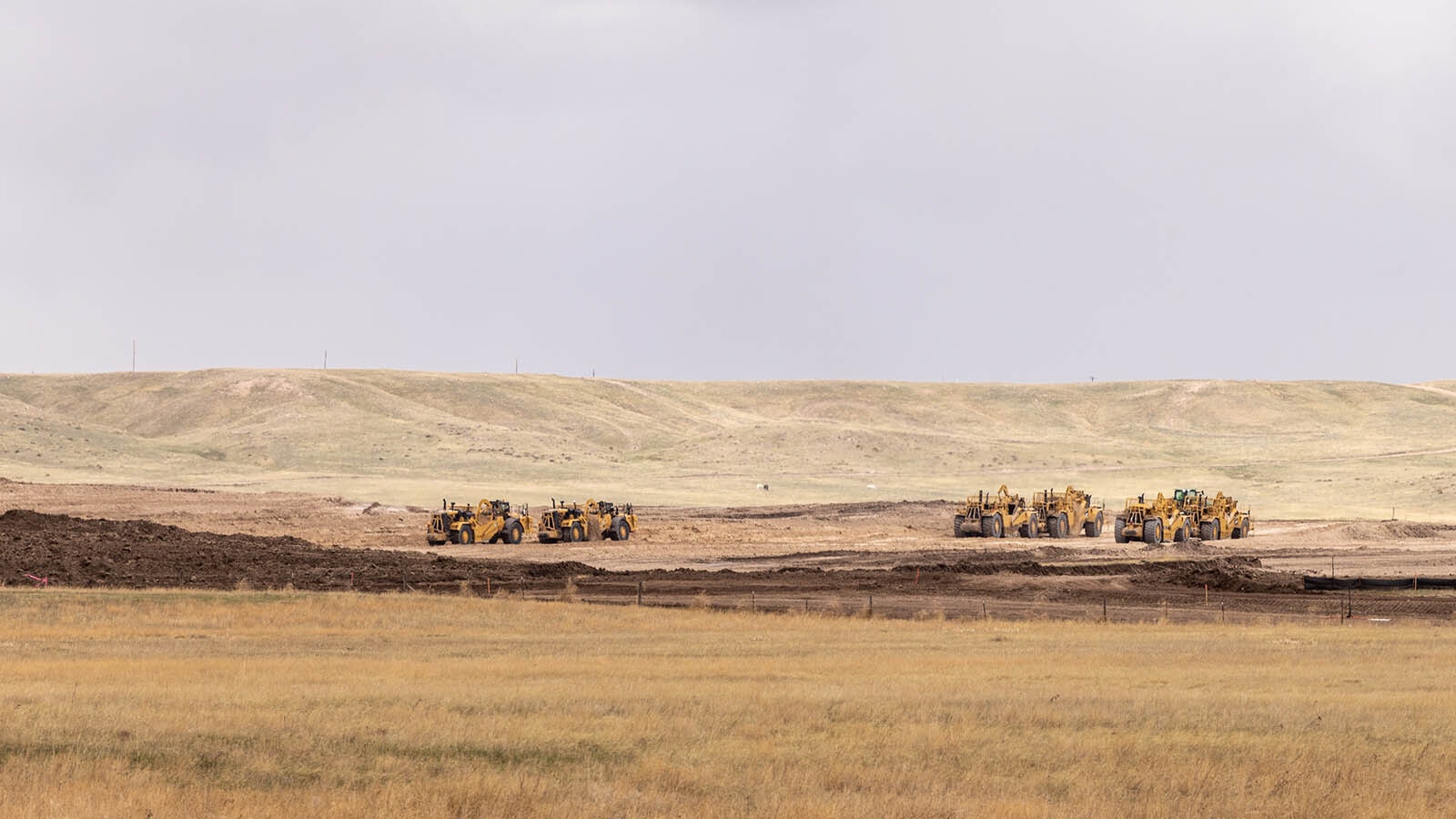

/cdn.vox-cdn.com/uploads/chorus_asset/file/22461385/vpavic_4547_20210421_0067.jpg)


